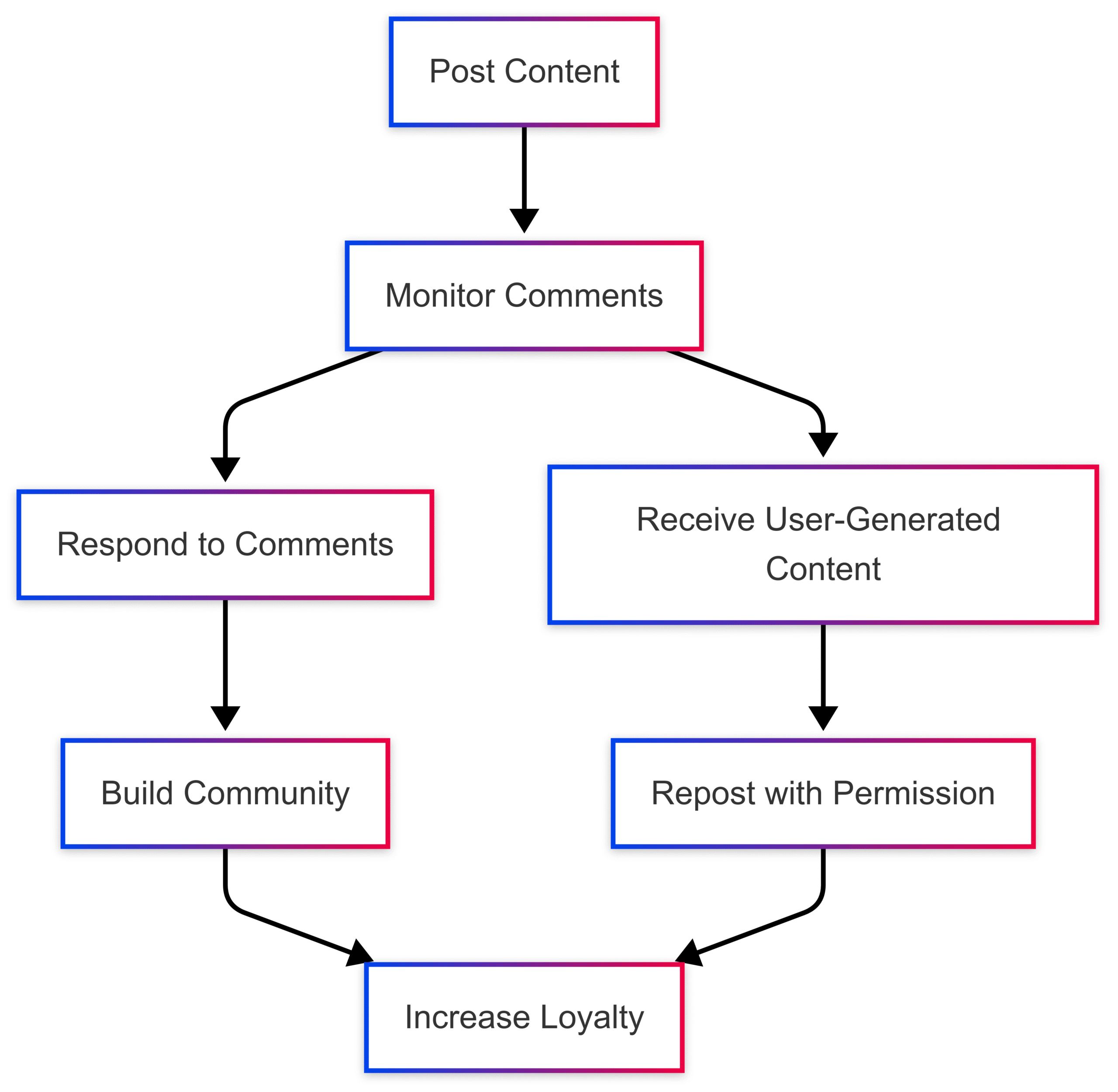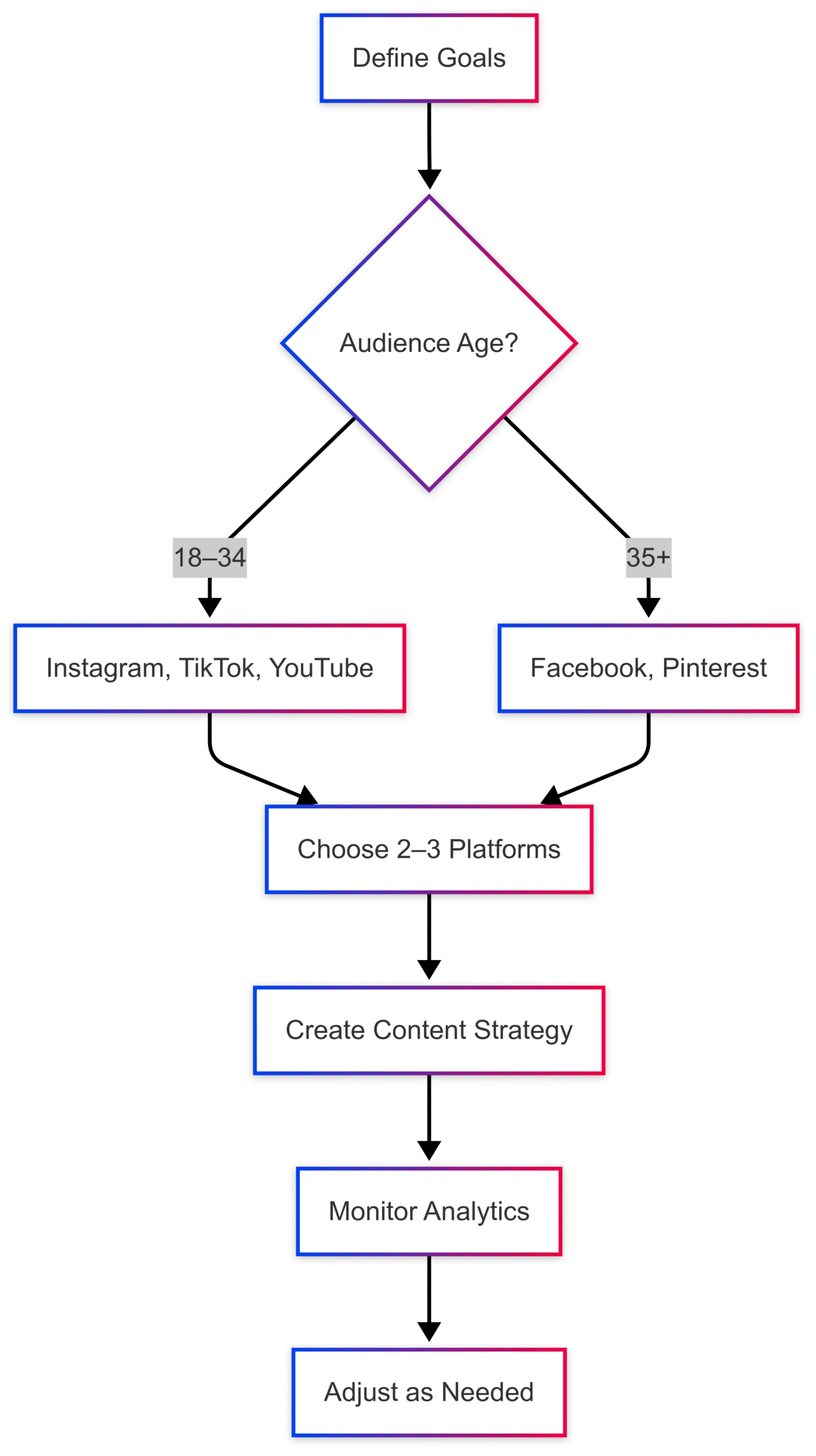Learn how to promote your food blog on social media with high-quality visuals, consistent posting, and strategic platform use. Boost engagement and traffic now!
Social media is a powerful tool for food bloggers aiming to grow their audience, drive traffic to their websites, and build a recognizable brand. With billions of users across platforms like Instagram, Pinterest, Facebook, TikTok, YouTube, Twitter, and LinkedIn, the opportunities to connect with food enthusiasts are vast. However, success requires a strategic approach tailored to each platform’s unique strengths and audience demographics. This comprehensive guide explores how to leverage social media effectively to promote your food blog, offering actionable strategies, platform-specific tips, and insights to maximize your impact. By focusing on high-quality visuals, consistent posting, audience engagement, hashtags, influencer collaborations, and targeted advertising, you can elevate your food blog to new heights.
Why Social Media Matters for Food Bloggers
Social media is where your audience spends a significant portion of their time online. It’s a dynamic space to showcase your culinary creations, connect with followers, and attract potential brand partnerships. The benefits include:
- Increased Reach: Platforms like Instagram and Pinterest allow you to tap into global audiences, exposing your recipes to new readers.
- Audience Engagement: Direct interaction through comments, messages, and user-generated content fosters a loyal community.
- Brand Visibility: Consistent, high-quality content builds a recognizable aesthetic, making your blog memorable.
- Traffic Growth: Strategic posting can drive clicks to your blog, boosting ad revenue or affiliate marketing opportunities.
- Partnership Opportunities: A strong social media presence attracts brands for sponsored posts or collaborations.
However, time is a precious resource for bloggers juggling content creation, photography, and business management. To ensure you’re getting the most out of your efforts, focus on platforms that align with your audience and goals. Below, we break down the best strategies and platforms to promote your food blog effectively.
Key Strategies for Social Media Success
1. High-Quality Visuals: The Heart of Food Blogging
Food is inherently visual, and stunning imagery is non-negotiable for capturing attention on social media. Whether it’s a vibrant photo of a freshly baked cake or a sizzling video of a stir-fry, your visuals should make viewers hungry.
Master Food Photography
- Invest in Lighting: Natural light or affordable ring lights (e.g., Neewer Ring Light, ~$100) can transform your photos. Aim for soft, diffused lighting to highlight textures and colors.
- Experiment with Angles: Try overhead shots for flat lays, 45-degree angles for depth, or close-ups for details like a gooey chocolate drizzle.
- Edit Thoughtfully: Use free tools like Canva or paid software like Adobe Lightroom (~$10/month) to enhance brightness, contrast, and saturation without over-editing.
Create Engaging Videos
- Behind-the-Scenes Clips: Share quick glimpses of your cooking process to humanize your brand.
- Recipe Tutorials: Short, step-by-step videos (under 60 seconds for Instagram Reels or TikTok) are highly shareable.
- How-To Videos: Demonstrate techniques like kneading dough or tempering chocolate to add value.
Pro Tip: For videos, ensure a resolution of at least 1080p and use a tripod (e.g., Joby GorillaPod, ~$50) for stability. Optimal video sizes vary by platform—Instagram Reels and TikTok prefer 1080×1920 pixels, while YouTube supports 1920×1080 pixels.
2. Consistent Posting: Building Momentum
Consistency keeps your audience engaged and signals to algorithms that your account is active. However, quality trumps quantity—posting daily with subpar content is less effective than weekly, high-value posts.
- Establish a Schedule: Use tools like Later or Buffer (~$15/month) to plan posts. For example, post 3–5 times per week on Instagram and 1–2 times daily on Pinterest.
- Diversify Content: Mix recipes, cooking tips, food trivia, and travel-inspired posts to keep your feed dynamic. For instance, pair a recipe post with a fun fact about the dish’s cultural origins.
Example Schedule:
| Platform | Frequency | Content Type |
|---|---|---|
| 4–5 posts/week | Photos, Reels, Stories | |
| 1–2 pins/day | Recipe pins, infographics | |
| 3–4 posts/week | Videos, links, group discussions | |
| TikTok | 3–5 videos/week | Short, trendy recipe videos |
| YouTube | 1 video/week | Long-form tutorials, vlogs |
3. Engaging with Your Audience: Fostering Community
Engagement turns casual followers into loyal fans. Social media is a two-way street—interact with your audience to build trust and community.
- Respond Promptly: Reply to comments and messages within 24 hours. A simple “Thanks for trying the recipe!” shows you value their input.
- Run Contests: Host giveaways (e.g., a cookbook or kitchen gadget, ~$20–$50) to encourage user-generated content. Ask followers to share photos of your recipes with a branded hashtag.
- Share User-Generated Content: Repost followers’ photos or videos of your dishes (with permission) to showcase your blog’s impact and encourage more submissions.
Chart: Engagement Workflow

4. Utilizing Hashtags: Expanding Reach
Hashtags categorize your content, making it discoverable to users searching for specific topics. A strategic hashtag mix can significantly boost visibility.
- Research Relevant Hashtags: Use tools like Hashtagify or RiteTag (~$49/year) to find trending hashtags in your niche, such as #Foodie, #FoodBlog, or #HealthyRecipes.
- Combine Broad and Niche Hashtags: Pair popular tags (e.g., #Food, 500M+ posts) with specific ones (e.g., #VeganDesserts, 1M+ posts) to balance reach and relevance.
Hashtag Strategy Table:
| Platform | Max Hashtags | Recommended Mix |
|---|---|---|
| 30 | 10 broad, 15 niche, 5 branded | |
| 20 | 5 broad, 10 niche, 5 seasonal | |
| 2–3 | 1 broad, 1–2 niche | |
| TikTok | Unlimited | 3–5 trending, 2–3 niche |
5. Collaborating with Influencers: Amplifying Your Brand
Partnering with influencers can expose your blog to their followers, increasing credibility and reach.
- Find Relevant Influencers: Look for food bloggers or Instagram influencers with 10K–100K followers in your niche. Tools like BuzzSumo (~$99/month) can help identify potential partners.
- Co-Create Content: Collaborate on recipes, guest blog posts, or joint Instagram Lives. For example, create a recipe video together featuring your signature dish.
Pro Tip: Micro-influencers (10K–50K followers) often have higher engagement rates (5–10%) compared to mega-influencers (1M+ followers, ~1–3% engagement).
6. Targeted Advertising: Scaling Your Reach
Paid ads can amplify your content to a broader, targeted audience. Most platforms offer affordable advertising options for small budgets.
- Platform Ad Options:
- Instagram/Facebook Ads: Use Meta Ads Manager to target users by age, location, and interests (e.g., “cooking enthusiasts”). Budget: $5–$20/day.
- Pinterest Ads: Promote pins to drive traffic. Budget: $2–$10/day.
- YouTube Ads: Use skippable in-stream ads for recipe videos. Budget: $10–$50/day.
- Optimize Ad Content: Use high-quality visuals and clear calls-to-action (e.g., “Get the recipe!”). Test different ad formats to find what resonates.
Ad Performance Table:
| Platform | Avg. Cost per Click | Avg. Engagement Rate | Best for |
|---|---|---|---|
| $0.50–$2.00 | 1–3% | Brand awareness | |
| $0.10–$1.50 | 2–4% | Website traffic | |
| $0.30–$1.80 | 1–2% | Community building | |
| YouTube | $0.10–$0.30 | 0.5–2% | Long-form content |
7. Choosing the Right Platforms
Not all platforms are equal for food bloggers. Select 2–3 platforms that align with your audience demographics and goals. Below is a detailed breakdown of each platform’s strengths, weaknesses, and best practices.
Platform-Specific Strategies
Instagram: Visual Storytelling for Younger Audiences
With 2 billion monthly active users, Instagram is a visual powerhouse ideal for food bloggers targeting younger audiences (18–34 years old).
- Best For: Building brand awareness, connecting with sponsors, and showcasing aesthetics.
- Content Types: Photos, Reels (15–60 seconds), Stories, and Live videos.
- Tips:
- Curate a cohesive feed with consistent colors and filters to reflect your brand.
- Use Reels for quick recipe tutorials (e.g., “5-Minute Pasta”). Aim for 1080×1920 pixels, 9:16 aspect ratio.
- Post Stories daily to maintain visibility; add polls or questions to boost engagement.
- Use link-in-bio tools like Linktree (free or ~$6/month) to drive traffic, as Instagram limits clickable links until you reach 10K followers.
- Example: Pinch of Yum’s “hands and pans” Reels use engaging visuals, hashtags (#HealthyRecipes), and a link-in-bio to drive traffic.
Advantages:
- Strong brand-building potential.
- High engagement with younger audiences.
- Ideal for sponsored posts.
Disadvantages:
- Limited link-sharing capabilities.
- Algorithm prioritizes Reels over static posts.
- Feature overload can be daunting.
Pinterest: Driving Traffic to Your Blog
Pinterest’s 498 million monthly users make it a top platform for driving blog traffic, with 52% of users seeking food and drink inspiration.
- Best For: Website traffic and audience expansion.
- Content Types: Image pins, video pins, and story pins.
- Tips:
- Create Rich Pins to display recipe details (e.g., ingredients, servings). Set up via Pinterest’s Business Hub (free).
- Use vertical images (1000×1500 pixels, 2:3 aspect ratio) with bold text overlays (e.g., “Best Chocolate Chip Cookies”).
- Pin fresh content weekly to align with Pinterest’s algorithm.
- Add “Pin It” buttons to your blog’s recipe cards to encourage sharing.
- Example: Pinch of Yum’s pin for “The Best Soft Chocolate Chip Cookies” uses Rich Pins and eye-catching text, driving significant click-throughs.
Advantages:
- High click-through rates (up to 2–3%).
- Long-lasting pins continue driving traffic months later.
- Easy to integrate with blog content.
Disadvantages:
- Requires frequent fresh content.
- Algorithm changes can affect visibility.
Facebook: Community Building for Older Audiences
With 3 billion users, Facebook is ideal for reaching older audiences (35–65+ years old) and fostering community through Pages and Groups.
- Best For: Driving traffic and building communities.
- Content Types: Posts, videos, live streams, and group discussions.
- Tips:
- Create a Facebook Page for your blog and post 3–4 times weekly with recipe links and videos.
- Start a private or public Group (e.g., “Baking Lovers”) to engage loyal fans. Share exclusive content to keep members active.
- Use 1280×720 pixel videos for high-quality playback.
- Example: Sally’s Baking Addiction’s “Baking Lovers” Group encourages fans to share photos and discuss recipes, boosting engagement.
Advantages:
- Large, diverse audience.
- High click-through potential.
- Groups foster loyal communities.
Disadvantages:
- Algorithm limits organic reach.
- Requires constant content updates.
TikTok: Viral Videos for Young Audiences
TikTok’s 800 million users, primarily aged 18–24, make it a hotspot for short, engaging recipe videos.
- Best For: Building brand awareness and reaching younger audiences.
- Content Types: 15–60-second videos (1080×1920 pixels).
- Tips:
- Create fun, trendy videos with popular sounds or challenges. For example, a “One-Pan Dinner” video set to a trending song.
- Use in-app editing tools for quick production.
- Include a call-to-action (e.g., “Link in bio for full recipe!”).
- Example: Tabitha Brown’s carrot bacon video went viral due to its unique approach and engaging personality.
Advantages:
- High viral potential.
- Early-mover advantage in food blogging.
- Easy to produce content.
Disadvantages:
- Limited traffic-driving capability.
- Requires unique, attention-grabbing videos.
YouTube: Long-Form Content for Deeper Engagement
YouTube’s 2 billion users, particularly aged 18–30, make it ideal for long-form recipe videos and vlogs.
- Best For: Building an audience, showcasing personality, and earning ad revenue.
- Content Types: Tutorials, vlogs, and multi-recipe videos (1920×1080 pixels, 10–20 minutes).
- Tips:
- Invest in a quality microphone (e.g., Rode VideoMic, ~$150) for clear audio.
- Create detailed tutorials or vlogs to showcase your expertise.
- Optimize video titles with keywords (e.g., “Easy Vegan Dinner Recipes”).
- Example: Pick Up Limes’ multi-recipe videos combine high production value with a warm personality, attracting millions of views.
Advantages:
- Ideal for in-depth content.
- Strong monetization potential via YouTube Partner Program.
- Appeals to younger audiences.
Disadvantages:
- High production effort.
- Monetization requires 1,000 subscribers and 4,000 watch hours.
Twitter: Quick Updates for Niche Audiences
With 330 million users, Twitter is best for short, engaging updates, though it’s less effective for recipe sharing.
- Best For: Building a personal brand and sharing quick updates.
- Content Types: Tweets (280 characters), photos, and short videos (1080×1080 pixels).
- Tips:
- Use concise descriptions with emojis and hashtags (e.g., “New recipe! 🍝 #Foodie”).
- Share blog links with eye-catching images.
- Example: Pinch of Yum’s tweets combine vibrant photos with snappy captions to drive engagement.
Advantages:
- Less saturated with food bloggers.
- Easy to share quick updates.
Disadvantages:
- Low recipe engagement.
- Limited traffic potential.
LinkedIn: Professional Niche Content
LinkedIn’s 500 million users focus on professional networking, making it a niche choice for food bloggers with educational or business-focused content.
- Best For: Promoting workshops, podcasts, or professional content.
- Content Types: Articles, videos, and posts (1200×627 pixels for images).
- Tips:
- Share content like “How to Start a Food Blog” or podcast episodes.
- Engage with food industry professionals for networking.
- Example: Food Blogger Pro’s LinkedIn posts promote podcast episodes to reach entrepreneurs.
Advantages:
- Unique audience of professionals.
- Ideal for niche content.
Disadvantages:
- Limited engagement for recipes.
Choosing Your Platforms Strategically
Rather than spreading yourself thin across all platforms, focus on 2–3 that align with your audience and goals. Consider:
- Audience Demographics: Instagram, TikTok, and YouTube suit younger audiences (18–34), while Facebook and Pinterest appeal to older users (35+).
- Content Strengths: If you excel at photography, prioritize Instagram and Pinterest. If you’re comfortable on camera, focus on YouTube or TikTok.
- Time Commitment: Platforms like Pinterest and Facebook require frequent posting, while YouTube demands fewer but higher-quality uploads.
Chart: Platform Selection Flow

Measuring Success and Adjusting Your Strategy
Track your performance using platform analytics (e.g., Instagram Insights, Pinterest Analytics) or tools like Google Analytics for blog traffic. Key metrics include:
- Engagement Rate: Aim for 1–5% (likes, comments, shares divided by followers).
- Click-Through Rate: Measure clicks to your blog (Pinterest and Facebook often yield 1–3%).
- Follower Growth: Track monthly increases to gauge brand awareness.
Adjust your strategy based on what works. For example, if Instagram Reels drive more engagement than static posts, allocate more time to video content.
Conclusion
Promoting your food blog on social media requires a strategic blend of high-quality visuals, consistent posting, and audience engagement. By leveraging platforms like Instagram, Pinterest, Facebook, TikTok, YouTube, Twitter, and LinkedIn, you can reach diverse audiences, drive traffic, and build a loyal community. Start by selecting 2–3 platforms that align with your audience and goals, and use the strategies outlined—stunning visuals, targeted hashtags, influencer collaborations, and paid ads—to maximize your impact. With dedication and data-driven adjustments, your food blog can thrive in the vibrant world of social media.
Please share these How to Use Social Media to Promote Your Food Blog with your friends and do a comment below about your feedback.
We will meet you on next article.
Until you can read, Mushroom Breakfast Flatbread
